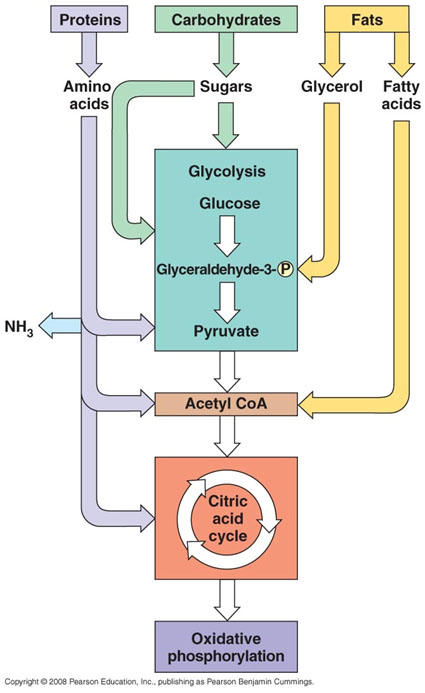
BIO 111: FOUNDATIONS OF BIOLOGY
LECTURE 4: Cells II: Metabolism"
Assumed Knowledge:
Chapter 8, through the material represented by the study questions.
Study Questions for Chapter 8 and Chapter 9:
- State the first and second laws of thermodynamics.
- Describe the types of energy depicted in the "diver" picture.
- How is it that complex life can accumulate energy and mass in light of the
second law?
- How is ATP invovled in catabolic and anabolic reactions?
- What types of cells exploit glycolysis?
- Where in a cell does glycolysis occur?
- What is needed for glycolysis to occur? What is produced?
- Besides glucose, what is often the rate-limiting variable?
- Do anaerobic and aerobic metabolism recycle NAD?
- How do plants, fungi, and bacteria recycle NAD in the absence of oxygen?
What is produced?
- How do animals do it? What is produced?
- What is the primary function of fermentation?
- What are the three steps of aerobic metabolism (after glycolysis)?
- Where do these reactions occur in eukaryotes (specifically)?
- What happens in the gateway step?
- What happens in the Citric Acid Cycle?
- What happens in the electron transport chain?
- What is th energy in NADH and FADH used for? How does this result in the
production of ATP?
- Why do we breathe in oxygen? what is it used for? What is produced when
it is "used"?
- How is this ATP used by living systems? (Two ways).
- Animals use this to move... how?
